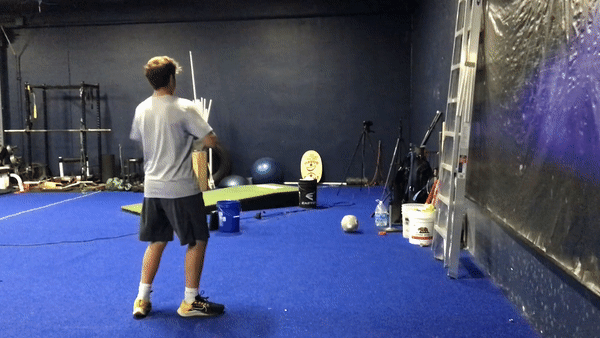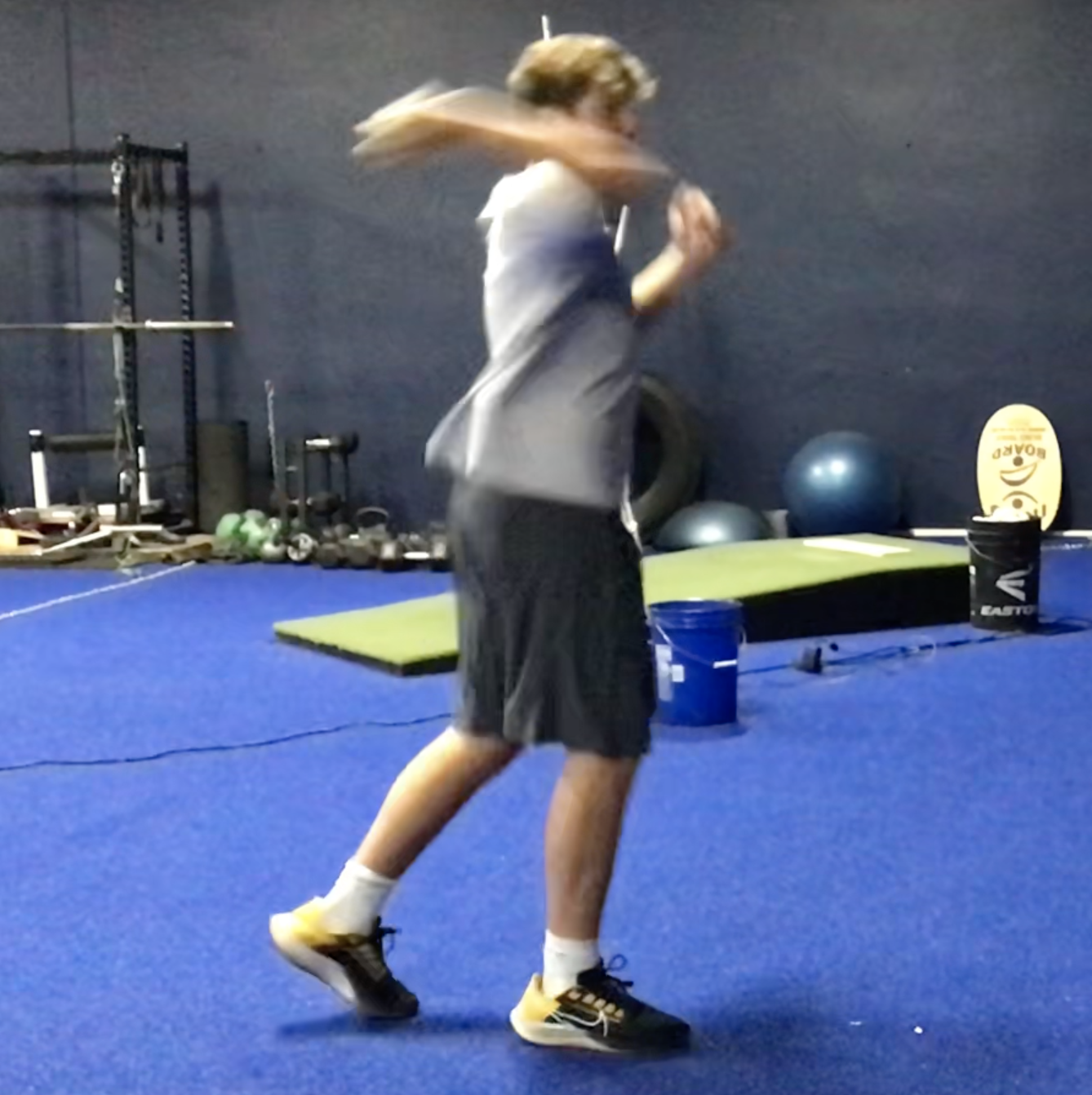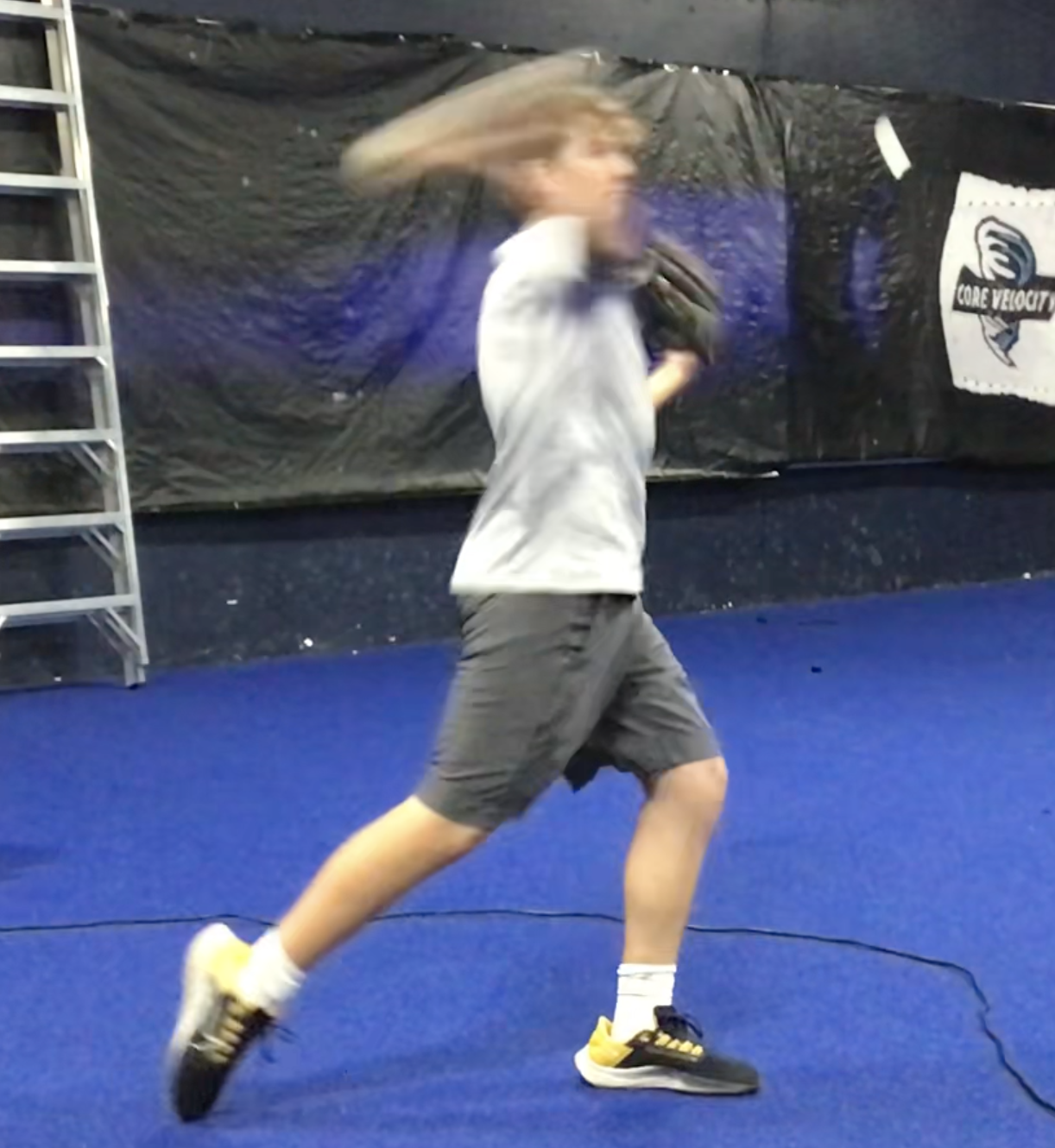
The other day, I had a pitcher come in for an evaluation.
Whenever kids come in for a pitching evaluation, I want to take a lot of time and observe what they do on the mound. I want to see the delivery, ball flight, and transfer of energy. I want to see what pitches they throw and what parts of the zone they commonly utilize. This process is designed to gather context. The more I can understand about who he is as a pitcher, the better I can evaluate him and provide him an accurate assessment. This includes where he’s currently at, what I think he does well, and what I believe his biggest opportunities for growth are.
This process also begins well before he ever steps on the mound.
One of my favorite books is Atomic Habits, written by James Clear. In the book, Clear talks about the importance of habits and routines. If you set a lofty goal for yourself, you can’t focus on the actual goal. You need to build out a system. These systems rely on routines. The things we do everyday set the floor for our behavior. If you’re trying to lose weight, the number on the scale shouldn’t be the goal. The goal should be to become the type of person that exercises daily, eats well, hydrates, and sleeps 7-9 hours per night. Routines shouldn’t be viewed as dull monotony. They’re the building blocks for change – that is, if we actually use them to our advantage.
When I evaluate pitchers, I don’t just evaluate their delivery. I evaluate their systems. I want to see their routines. What do they do before they pick up a baseball? Do they stretch? Warm up with bands? Do a couple of arm circles? When they’re ready to pick up a ball, where do they start? Do they use plyos? Are they using a specific drill routine? Does it look deliberate, or does it look like they’re throwing a ton of shit at the wall and hoping something sticks?
More times than not, the low hanging fruit you’re searching for isn’t in the delivery. It’s in these questions where you’ll find their biggest barriers to performance. The delivery is merely a reflection of this.
Taking it back to my evaluation, this young man’s warm up was far from impressive. He went over and started to do some J-Bands, which weren’t very crisp. Core and scapular control didn’t seem to be too important. He then headed over to the plyo wall to do some reverse throws. Again, very okay. There didn’t really seem to be any purpose or understanding to why he was doing them. He was just doing them (at least it’s tough to screw up a reverse throw).
And then I saw him go to his next drill: Pivot picks. I pulled out my iPad and made sure to record this set. If my prediction was spot on, these throws would create an invaluable conversation later on in the evaluation. Turns out, my prediction was spot on:

Pivot picks have recently become a polarized arm patterning tool. The benefit of the drill is in the set up. The athlete is starting in a constrained position. This takes the lower half out of the equation and allows for the majority of the focus to be on the upper torso and arm. If you’re working to solving an arm inefficiency, isolating the arm is often a great strategy to teach new positions and movements. Sometimes cleaning up the lower half can clean up the arm. Other times, the arm needs specific and isolated work. This is where pivot picks can be pretty impactful. The constraint of the drill gives the arm a ton of feedback on positioning and energy transfer from the torso out to the hand. The problem, however, is in how most people practice and apply the drill.
The problem is never just the drill. It’s about how you do the drill.
If we go back to the pivot pick from above, we see a glaring issue. The elbow pushes forward and gets ahead of the line of the trunk. Instead of unwinding around the body, the arm pushes forward and exposes the ulnar collateral ligament (UCL) to shear forces. It’s a really inefficient way to throw, and it often creates elbow pain:

I proceed to watch him throw. Below is what one of his first throws looks like:

This was his first throw with a baseball. Look familiar? The elbow push isn’t as significant, but you can still see residue from the pivot pick throws. The good news for this young man is these throws were only a portion of his actual throwing. Most of his throwing was okay. The arm wasn’t great, but it didn’t look as bad as it did when he was doing his pivot picks. Most of our conversation and interventions were about his lower half.
As I’m wrapping up the evaluation, I go back to the videos I captured of him doing pivot picks. I asked him why he did them. Was there a purpose behind the drill, or did he do them simply because someone else told him to? Sure enough, there was zero purpose behind them. He just does them because his high school coaches tell him to. Everyone does them. There’s no focus on the arm or a specific inefficiency he’s trying to eradicate. He just does them because everyone else does. In other words, his throwing system isn’t a byproduct of calculated coaching interventions. It’s a product of group think.
It’s not so bad to jump off a cliff if everyone else does – right?
…
I have a huge peeve when it comes to pitching. It has nothing to do with actually throwing a baseball. It has everything to do with what John Wooden warned us of a long time ago: Activity without achievement. Nothing bothers me more than to see kids go through drills or routines that lack purpose. They don’t do things because they’re important. They do things because other people think they’re important. Whether it’s a coach, teammate, or their parent, they picked up a drill somewhere and decided to start doing it because they weren’t really doing anything in the first place. It’s the antithesis of development. We’re not doing it to achieve something. We’re doing it because it looks like achievement.
From a skill development standpoint, our systems and routines are everything. What we do most often is what’s going to show up most often – consciously or unconsciously. As a result, we must put a premium on our routines. We have to take pride in what we do on a daily basis. Everything must be done with the purpose of helping us throw better. If it’s not helping us, it’s hurting us. There’s no gray area in between.
If we go back to the kid in my evaluation, our process for training isn’t going to start with throwing. It’s going to start with everything we do before we throw a baseball. Some of it will be addition, some will be coaching, and the rest will be subtraction. We’re going to add some exercises that target some of his movement inefficiencies we identified in his evaluation. We’re going to coach up some of the things he’s already been doing, but not doing as well as he should (J-Bands). The rest of it will be eliminated (pivot picks). If it’s going to take a lot of time, effort, and energy to coach up, I’d rather just not do it. The majority of our work needs to happen on the mound. If you’re spending more time coaching drills than you are coaching the delivery, I think you’re makin a big mistake. The goal isn’t to do drills well. It’s to pitch well.
I recently watched a video of NFL All-Pro Wide Receiver DaVante Adams. If you’re a coach, you need to watch it (see full video). In the video, Adams was talking about how kids constantly ask him about what drills they should do to get better at football. His response was priceless:
“(Players) always ask me for drills, and I’m always like go run routes. Full speed routes. You do all these drills, but I don’t want you to do stuff that’s not going to translate to the game. As a football player, we don’t put a lot of drills on instagram to look cool. We play football. And that’s what I do.”
When I heard this, I couldn’t help but think about baseball We’re facing the same exact problem. Kids want drills and products. They’re not interested in systems. They don’t want to do the boring stuff that transfers. It’s created a culture of asymmetry: We’re gamifying training and desensitizing performance.
Struggling to find velocity on the mound? Don’t worry about actually pitching. Just do these three velocity drills. Use this product that’s going to add velocity overnight. This might seem like an exaggeration, but think about what’s actually going on. The second velocity gets thrown onto the table, systems get thrown to the burner. It’s all about quick fixes: Drills, weighted baseballs, long toss – you name it.
For all the progress pitching development has made in the past two decades, I think we have some “unlearning” to do. People view pitching development less as a system and more about a product. Velocity enhancement has become tied to drills, tools, and products. This isn’t problem solving. It’s branding. There’s no individualization in giving your entire staff the same set of weighted ball exercises. How many of them need to throw weighted balls in the first place? How have you assessed them? Have you clearly identified their biggest barriers to performance? Do you know what their current systems are? Better yet – do you even know if they have a system in the first place?
The kid in my evaluation fell into this trap. He was doing an exercise that’s been branded as a velocity enhancement tool. He wasn’t doing it because it was important to him. He wasn’t doing it because he had been assessed and his throwing inefficiencies had been clearly identified. He wasn’t even doing it well. It’s the new age cookie cutter trap. Old school drills have been replaced by new school techniques. What hasn’t changed is our thought process for implementation. Most of us are not willing to thoroughly evaluate kids and build out a regimented system designed to help optimize performance. We’d rather play the percentages. Cream will always rise to the top, but is that what coaching is all about?
Here’s the good news: As coaches, we can create a clear competitive advantage over our competition before our players ever pick up a baseball. It’s in the system you build out. Our routines give us an edge. If you take the time to build out a system of consistent behaviors that eradicate barriers to performance, encourage positive adaptations, and eliminate activity without achievement, you will create a distinct and immediate competitive advantage. Purposeful behavior is our catalyst for behavior change. This starts with our current level of systems.
Aristotle said it best: “We are what we repeatedly do. Excellence then is not an act, but a habit.”
Don’t view the boring stuff as the unimportant stuff. We don’t rise to the occasion. We fall to our level of systems. Start building out yours today.
